Long Island Auto Manufacturers & Body Builders #2: J.T. Cantrell & Company of Huntington Part I
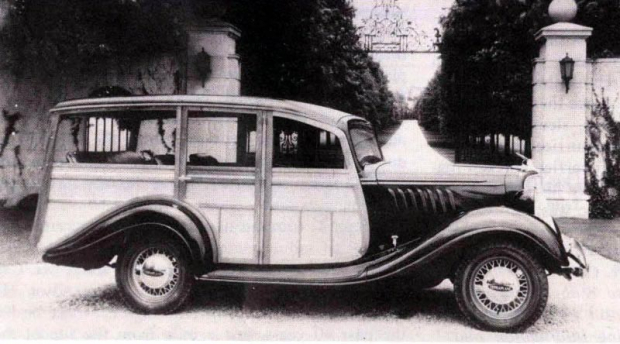
Our second in a series on Long Island automobile manufacturers and body builders documents J.T. Cantrell and Company of Huntington and Huntington Station. Cantrell is considered the first designer and builder of woodie station wagon bodies.
Part I highlights a 1973 Antique Automobile on Joseph T. Cantrell supplemented by photos courtesy of Walter McCarthy. Next week in Part II, automotive historian Walt Gosden will share his insight on J.T. Cantrell and rare images from his coachworks collection.
Enjoy,
Howard Kroplick
Joseph T. Cantrell
First Designer and Builder of Wood Station Wagon Bodies
By Daniel and Karen Chapman
Antique Automobile
November-December 1973, Vol. 37, No.6
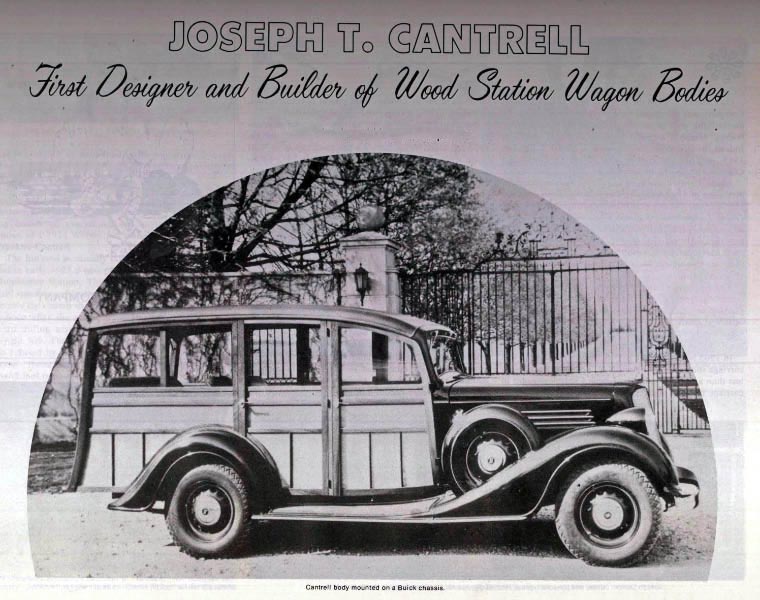
On October 1, 1958 the property of J. T. Cantrell and Company was purchased by a window manufacturer. It marked the end of an era of wood "station wagon" bodies. Joseph Cantrell's company spanned that era. Indeed, its first body was fitted to a Model T Ford in 1915, and its last bodies were fitted to GMC and Chevrolet chassis in the late 50's.
Joseph Cantrell was born in 1875 in Sunken Meadow, N.Y., one of 13 children. The large family lived comfortably on their father's candle manufacturing business. As a boy, Joseph was fascinated with woodworking. After school hours found him in the local boat building shop, and this early training was to serve him well in later years. He continued boat building (including one 40 ft. sailboat) throughout his active business years and even after retirement.
Young Joseph didn't take much to books and schooling. His formal education ended in the fourth grade. For years he was an apprentice woodworker in boat and carriage shops where, slowly and patiently, he mastered the elementary skills. Hard work and a natural, innate ability distinguished him.

In 1905 he bought out T. F. Scudder's blacksmith and carriage shop in Huntington, N.Y. For three years, with less than a dozen employees, Joseph Cantrell engaged in carriage building and repair. In the three story building on Main Street he undertook all phases of construction, including making springs, wheels, and upholstery.
Caption: Joseph Cantrell (arrow) and his employees at the Main Street factory.
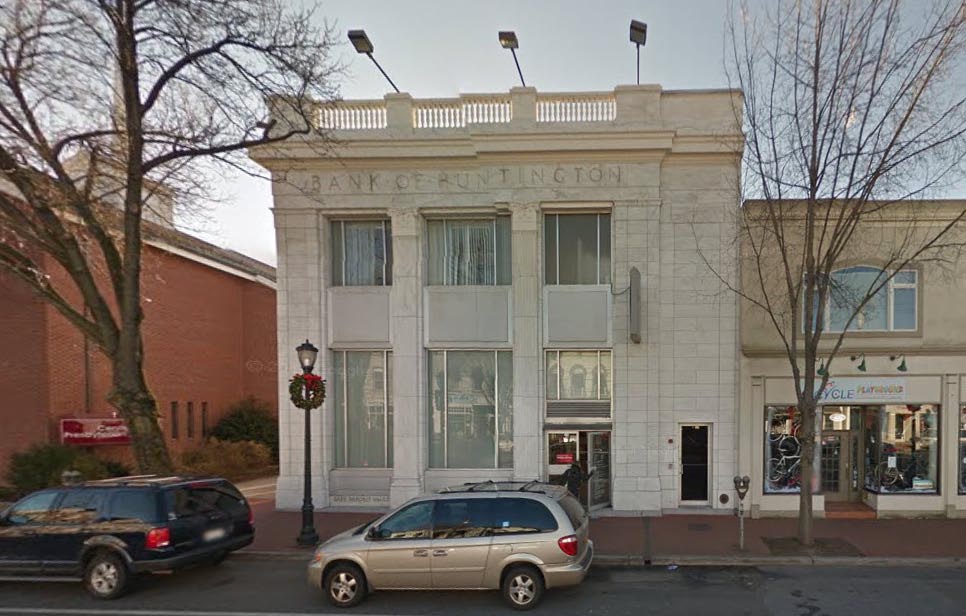
Caption: Now 2015: Location of the Cantrell Main Street factory east of New York Avenue.
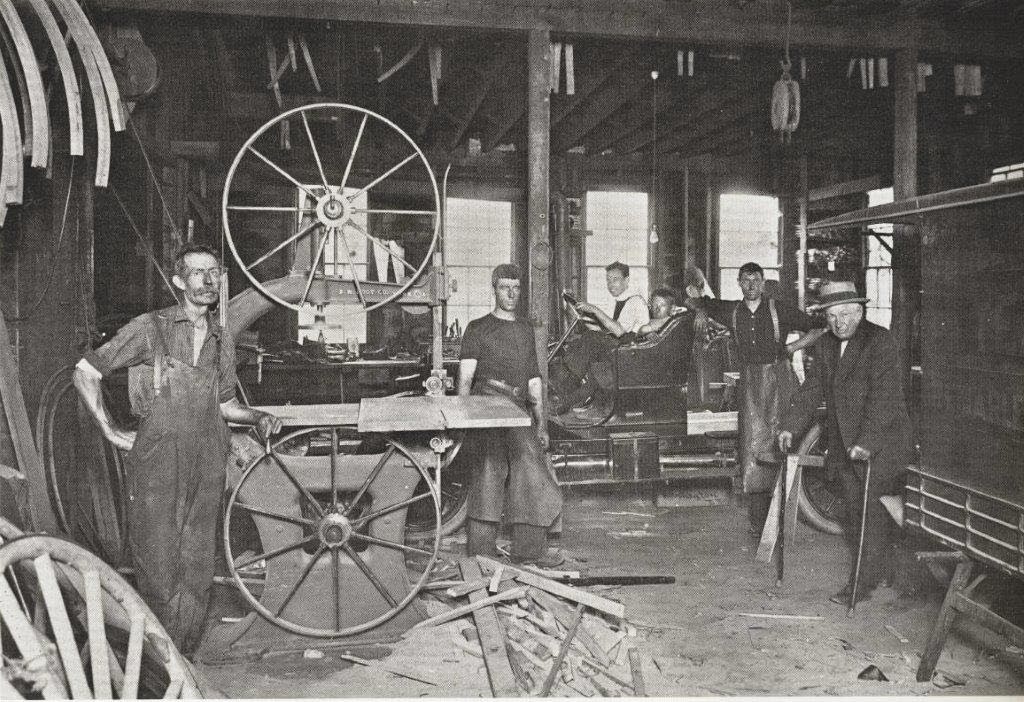
Business prospered as the carriages became appreciated for their quality construction and durability. In 1908 he moved the operation a few blocks away to Wall Street where business continued as usual.
Caption: Joseph T. Cantrell can be seen in the apron (second from the right). Courtesy of Walter McCarthy.
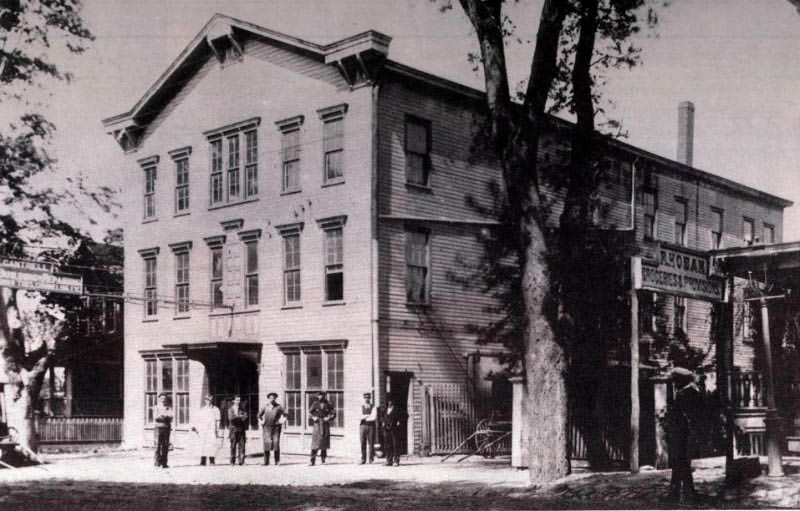
In 1913 he invited his younger brother Albert to join him as a partner. They conducted business under the name J. T. Cantrell and Brother. In later years, the brothers took a third partner, George W. Ruland.
Caption: The Cantrell factory on Wall Street, Huntington.
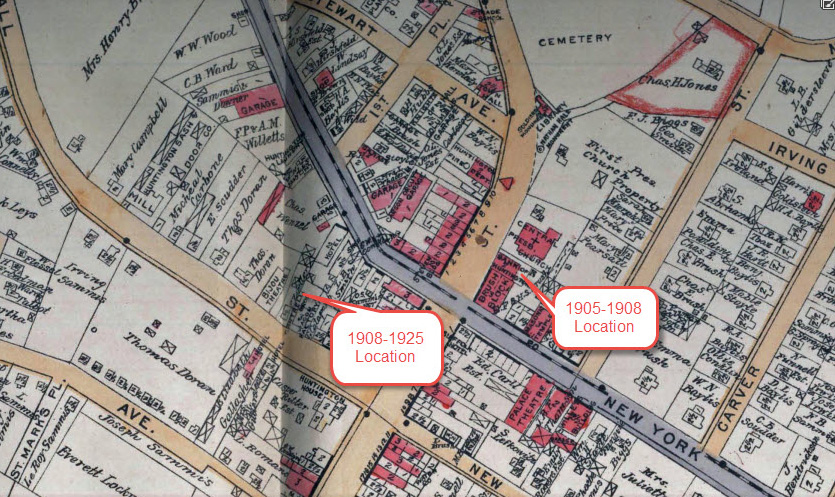
Caption: Location of the two Cantrell Huntington factories as seen in the 1917 Belcher Hyde map.
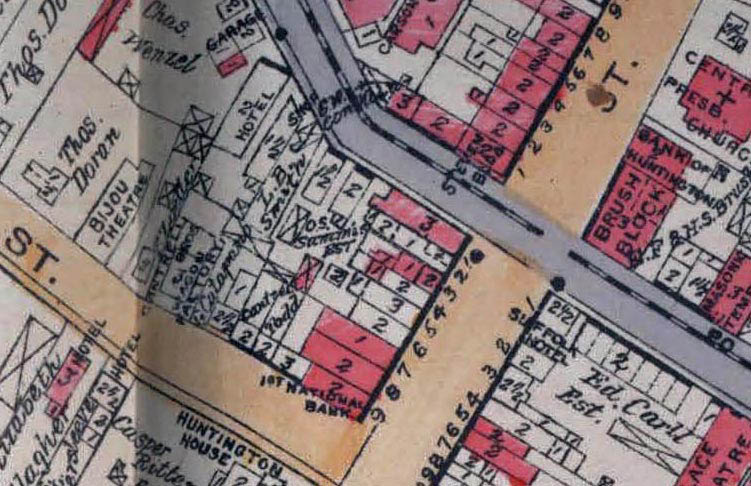
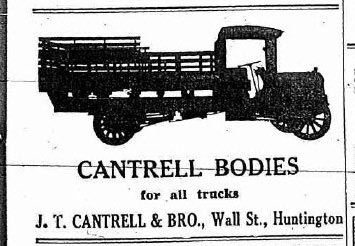
Fine as the carriages were, it was a dying business, its demise hastened by Henry Ford's Model T automobile. Cantrell realized he would have to change with the times, and at the suggestion of J. A. Carlson, the Cantrells began building bodies for automobiles.
Caption: Cantrell Ad for its Wall Street location.
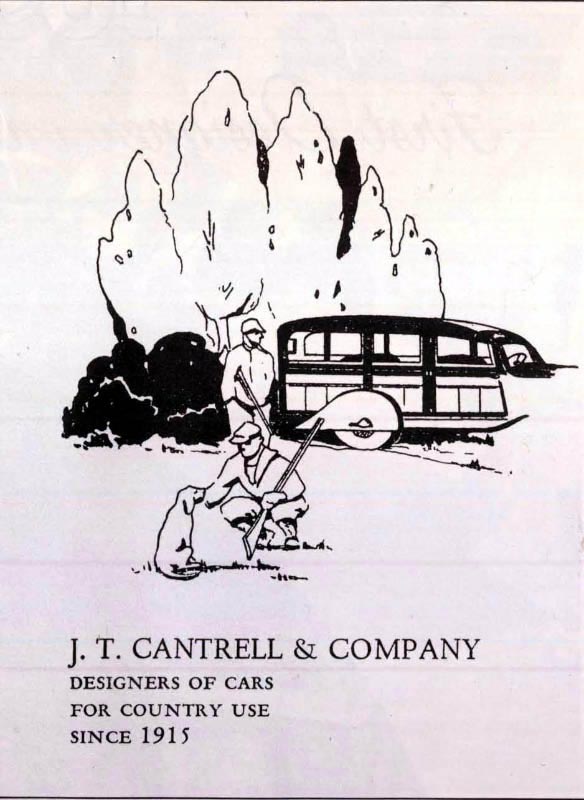
In l9I5, J. T. Cantrell and Brother built a forerunner of the station wagon on a Model T chassis and called it a "depot wagon." To their knowledge, this was the first of its kind ever to be built. The depot wagon was an immediate success and the brothers were flooded with orders.
Caption: The cover of a J.T. Cantrell sales brochure.
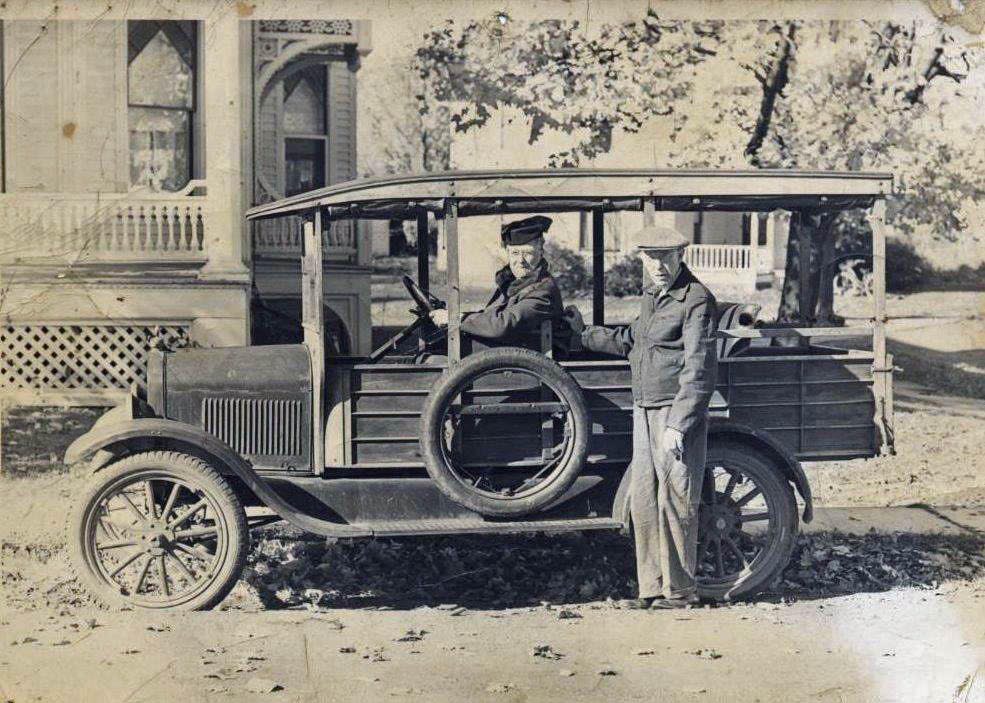
This type of car filled a void. In 1915, Long Island and the surrounding areas outlying New York City were still largely rural. Its utilitarian concept of design, rugged quality, and well established reputation from carriage building made it a logical choice for the farmer who gave up his buggy for an automobile. It combined the wagon’s ability to haul loads with motorized convenience. Indeed, the term depot wagon referred to carrying goods to the train depot.
Caption: Albert Cantrell and his wife sitting in a "depot wagon". Courtesy of Walter McCarthy.
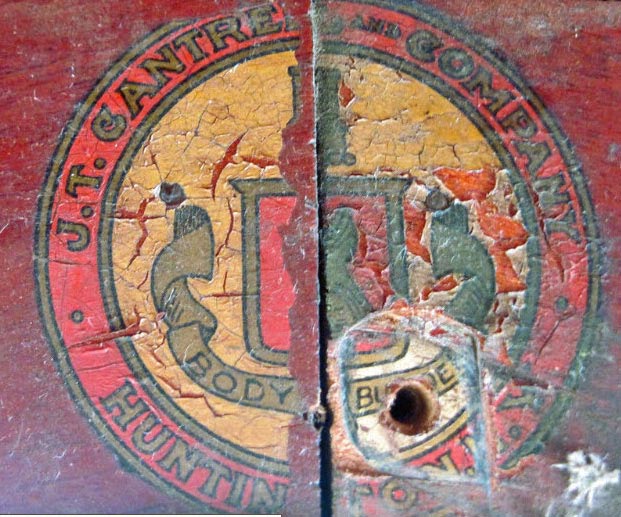
In the first few years of business the Cantrells built bodies exclusively on Dodge and Ford chassis for local customers. By the early 20's, however, they were building bodies on everything and anything. This writer knows of a 1924 Wolverine-Cantrell and a "horse plow" Franklin-Cantrell.
Caption: The J.T Cantrell seal.
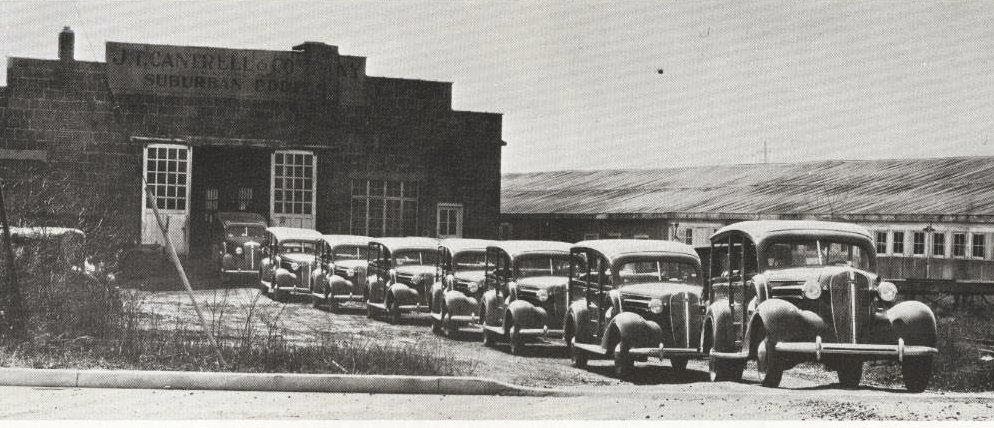
The business eventually outgrew the Wall Street plant, and in early 1925 a new plant was completed in nearby Huntington Station. This location had more floor and yard space as well as the advantage of a railroad siding to receive the chassis shipped from the factory.
Caption: Cantrell body works in 1937. Courtesy of Walter McCarthy.
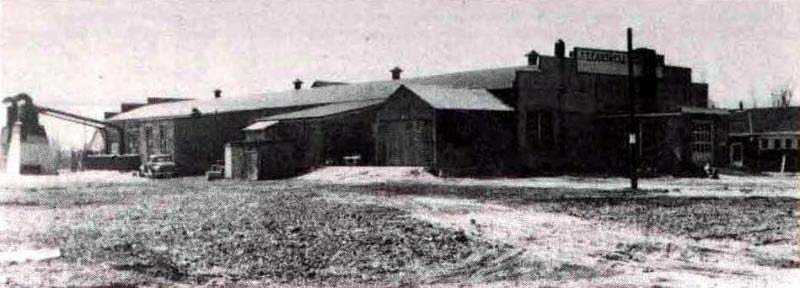
Soon after the move, however, disaster struck. One night during a snowstorm the building, fully stocked, caught fire. There was little the fire department could do. Fueled by the stored wood, the fire burned out of control throughout the night and by morning, little more than ashes remained. Nobody had thought to inform the brothers of the blaze. Needless to say, they were quite shocked as they drove up to the factory site that morning!
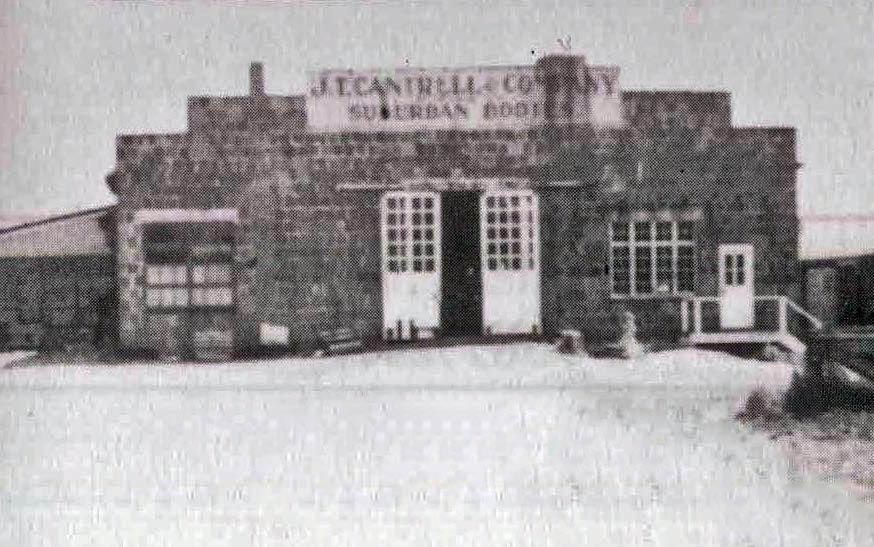
They went to work immediately on the same site and in May 1926 the new factory was completed. The firm was now operating under the name of J. T. Cantrell and Company.
Caption: Then 1939: J.T. Cantrell & Company Huntington Station building.
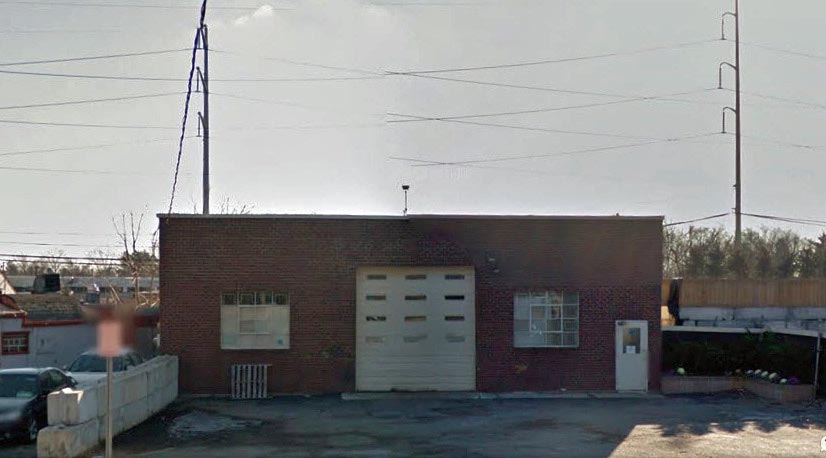
Caption: Now 2015: The entrance to the factory entrance is still standing at Railroad Avenue and Pulaski Road in Huntington Station.
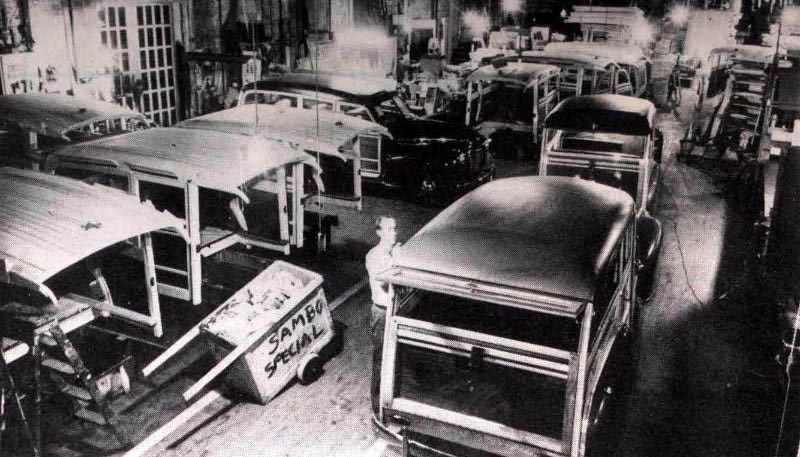
Salesmen traveled throughout the New Jersey, New York and Connecticut area canvassing the many dealers who offered the Cantrell body to their customers. At the factory, the chassis were handled by make. For example, the Cantrells would obtain a shipment of Chevy chassis, build the bodies on them and dispatch them to dealers. Then they'd begin work on Dodges. When the Dodges were finished, work began on still another make.

When a new model came out, Joseph Cantrell would design a body for it, draw up full-sized blueprints and notify dealers of the make. Cars fitted with Cantrell bodies included Ford (Model T), Dodge. Chevy, Plymouth. Chrysler. Buick. Packard, Terraplane and Franklin. Probably more Chevrolets were fitted with Cantrell bodies than any other make of car, especially in the later years of the company's existence. This writer's first car was a 1948 Cantrell-Chevy that survived a decade of Maine winters in fine fettle. The frame was ash with panels of mahogany veneer. The roof was constructed of weatherproofed canvas stretched over ash ribbing.
Caption: Cantrell body works (1947). Courtesy of Walter McCarthy.
Hugh Nutting: These are 1940 cab-chassis built in the Terrytown Chevy Plant.
During the depression years the cars were not built on an assembly line basis as they were in more prosperous years. Rather. when an order came in it was assigned to one man, who undertook all phases of construction.
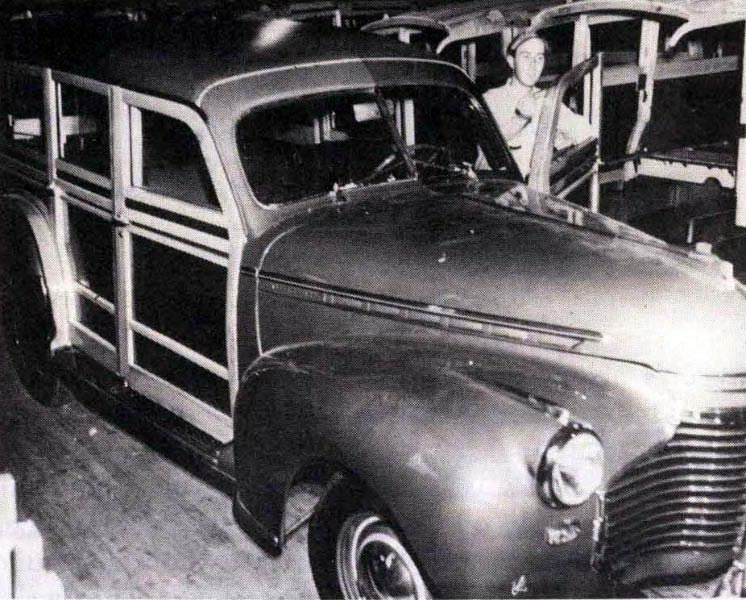
The chassis arrived, virtually bodiless from the windshield rearward, at the Huntington Station plant by the railroad. The frames on most of the pre-war bodies were constructed of either rock maple or mahogany, with panels of white birch, mahogany or cottonwood. One undesirable characteristic of rock maple was its twisting and warping with age. All wood parts were submerged in toxic wood primer to prevent dry rot. fungus and insect attack. Panels were waterproofed. The body frame was strongly steel braced throughout. All exposed joints were joined with waterproof glue. The completed body was finished with finest quality spar varnish, baked on.
Caption: Ed Cantrell applying finishing touches to a Chevy.
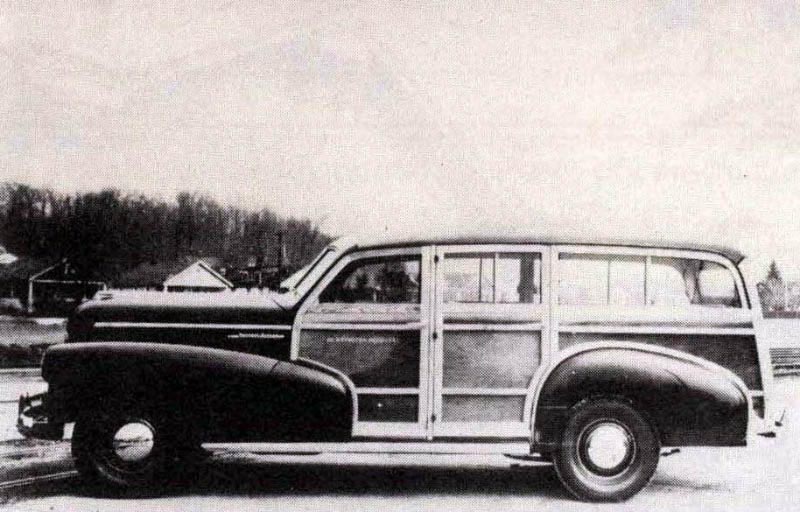
The Semi-Sedan model contained safety glass in the driver's door only and sport type curtains for the other openings. Half Sedan models had safety glass on all four doors and sport type curtains on the other openings. The four door Sliding Glass model had sliding glass on all four doors as well as the rear quarter side openings, with a close fitting curtain over the tailgate. The Sedan model was identical to the previous model except with drop glass instead of sliding glass on the rear quarter panels. A lift door for the tailgate was available in place of the curtain, if desired. The Deluxe Sedan model had Philippine mahogany frames whereas the Carryall had hard maple posts and ribs.
Caption: This Chevrolet-Cantrell donated to Huntinton Hospital by Joseph Cantrell.
Hugh Nutting: Joe gave one like this to the local Red Cross. Note there are no vent windows in the front windows, typical Cantrell construction.
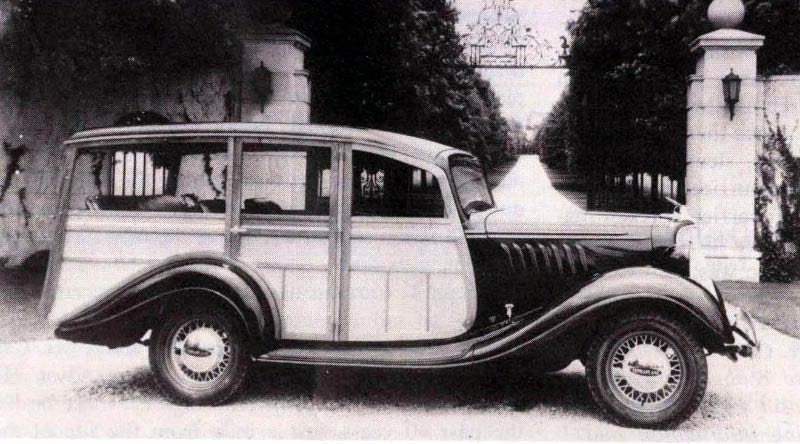
Besides bodies, the company also upholstered the interiors. The front seats were adjustable and the rear seats could be removed for increased carrying space. Cantrell also designed and obtained patents for "safety tailboard fasteners". These were advertised as "rattle proof, quick acting, positive", and were manufactured for him by a local metal fabricator.
A sampling of prices for 1935: Chevrolet, $395 tax, Terraplane, $427 + tax; Buick, $527 for Semi-Sedan body plus government tax and any chassis work required.
Caption: A Terraplane with a Cantrell body.
Hugh Nutting: Photo taken shortly after Cantrell went to a mahogany framing
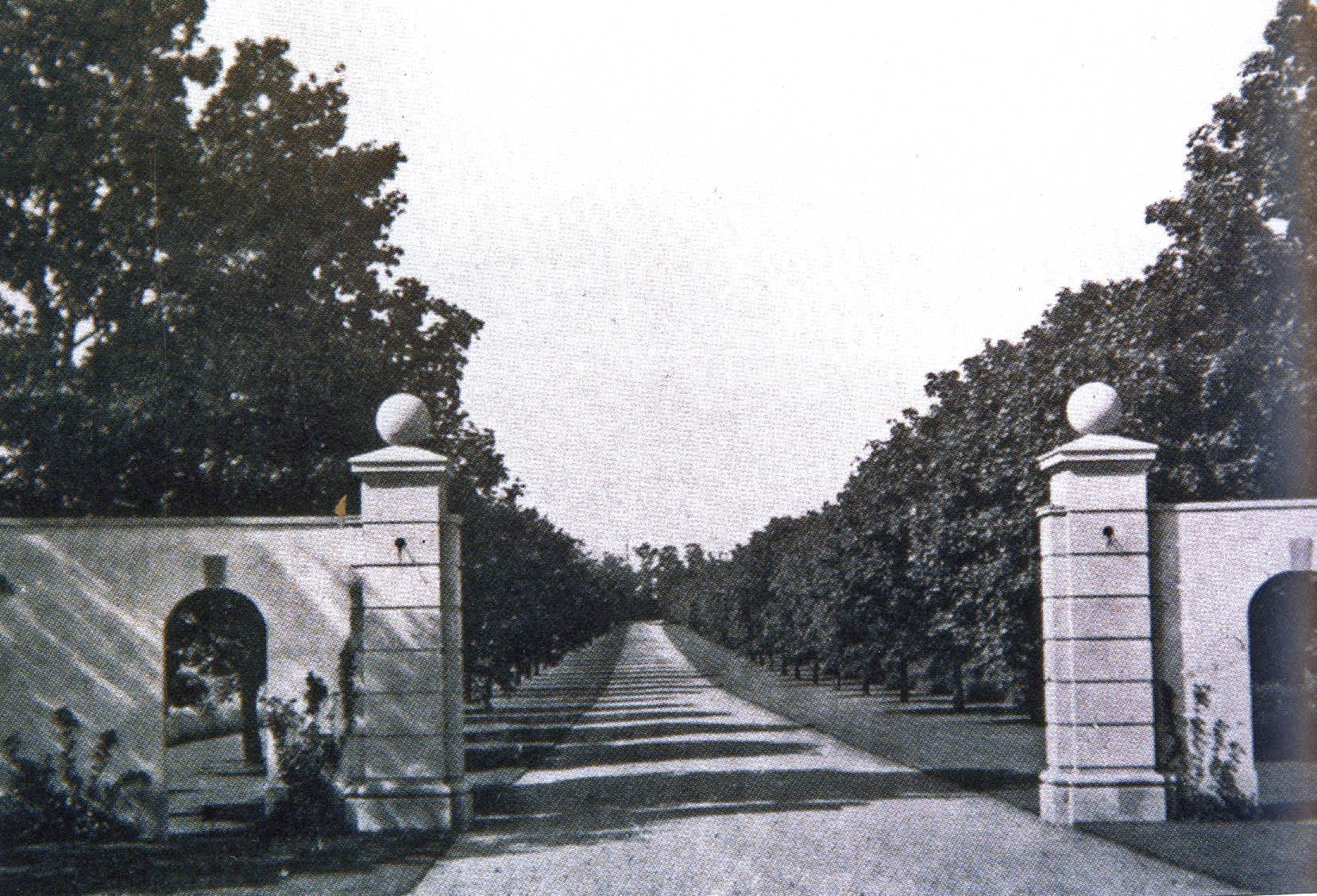
Greg O. has identifed the location for the above Cantrell photo shoot was West Gate Drive entrance to Oheka Castle seen here in 1924.
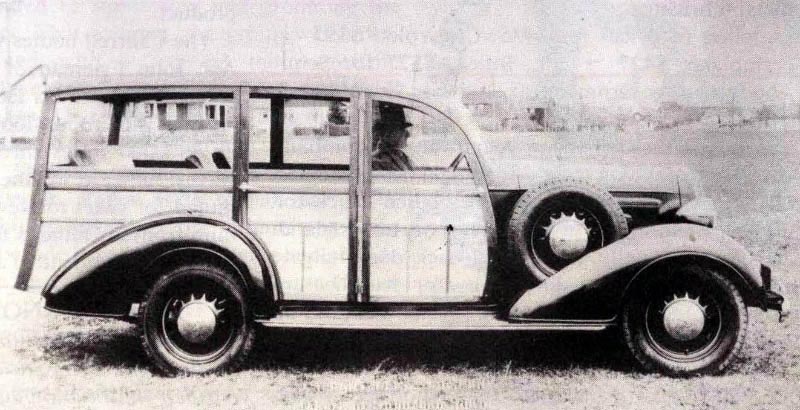
It was during the depression years that the company built several outstanding "one off" special design bodies. Cantrell designed and built a custom bodied Buick for the Marshall Field Estate in Lloyd Harbor, Long Island. The car had a specially constructed back door tailgate combination to transport bird dogs for its pheasant hunting owner. Another outstanding special was built on a Rolls-Royce chassis.
Caption: Chevrolet with a Cantrell body.
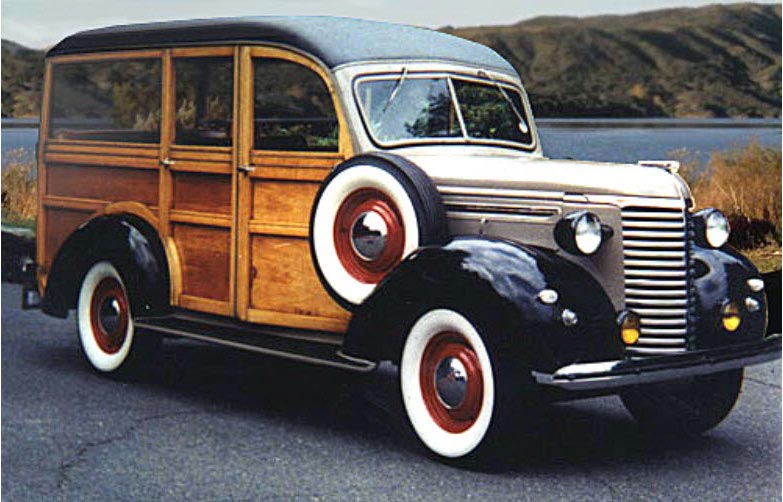
During the war years, the company did contract work for the War Department. Due to a shortage of automobiles during this period, this often meant converting sedans into station wagons. The car would be cut in two, the frame and driveshaft extended and strengthened, and wood built into the sectioned area.
Caption: A 1940 Chevrolet-Cantrell.
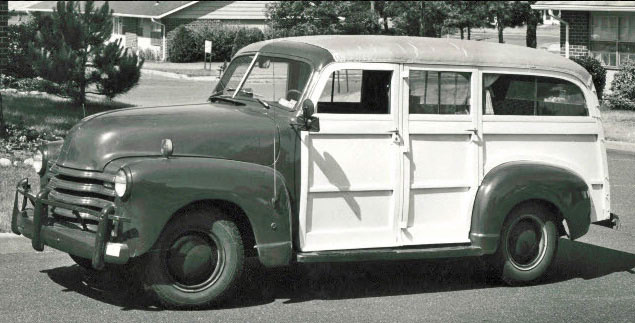
These "altered sedans", used by the Armed Forces, were seen in all theaters of the war. One, painted battleship gray, was shipped to the Pacific where it was used in the battle for the Caroline Islands.
Caption: A Chevrolet-Cantrell
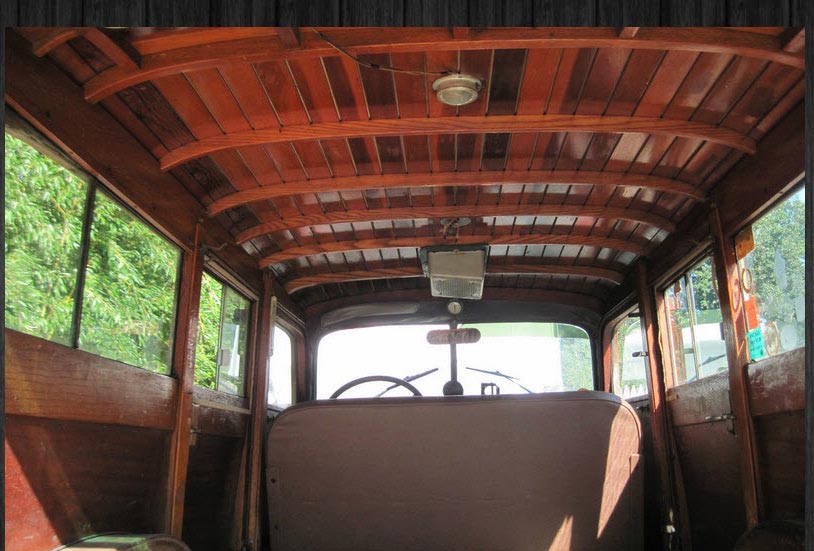
Many was shipped to the Pacific where it was used in the battle for the Caroline Islands.any Cantrell wagons found their way overseas by other means. Both before and after the war the company did contract work for General Motors, Chrysler, and Studebaker Exports.
Caption: The interior of the above Chevrolet-Cantrell
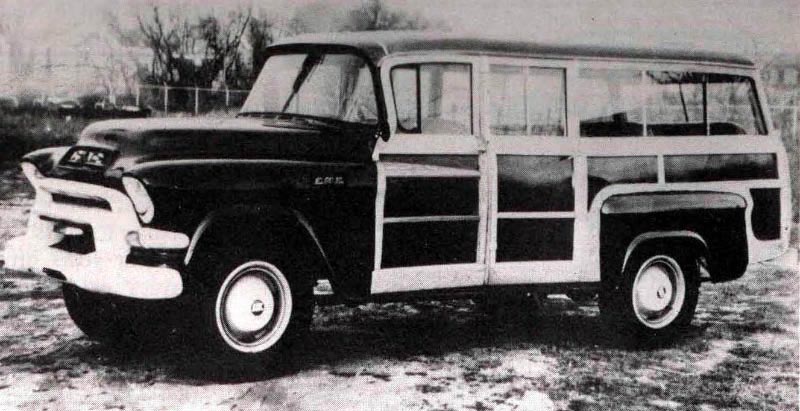
Post war years brought prosperity. Over a hundred employees produced almost two dozen cars a day, primarily on Dodge and Chevrolet chassis. The assembly line method was used. Joseph Cantrell managed the design and construction aspects of the work, while his brother Albert was concerned principally with the business aspects of the company. His sons, Dick Dickerson and Wilbur Percy, returned to the plant and assisted in the designing as well as the construction.
Caption: A "Huntington" station wagon body mounted on a GMC chassis.
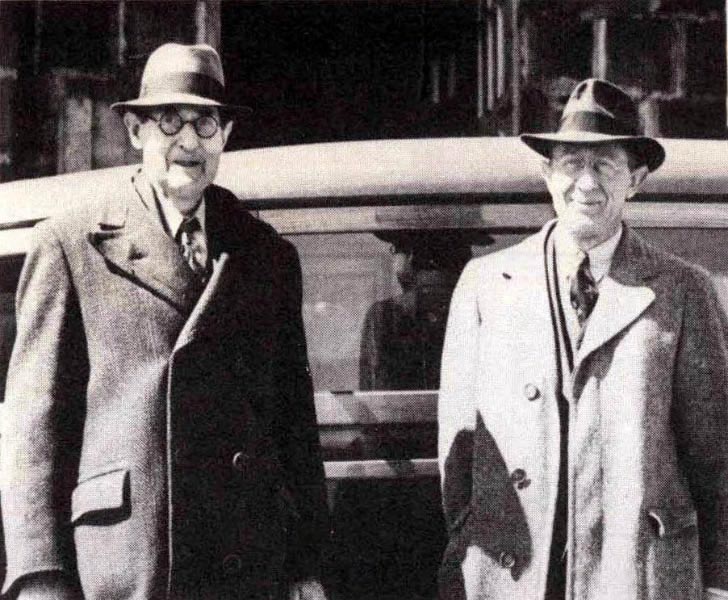
In January 1950, Joseph T. Cantrell announced his retirement from the company he had founded. After a half a century of building carriage and auto bodies, he sold his interest in the firm to his brother Albert, who continued production for several years.
Although he lives comfortably, Mr. Cantrell never made great amounts of money. He was a master craftsman, in the old world sense of the term, but an indifferent businessman. From studying the history of the company, their product and the man, one gets the feeling that he was not as concerned about the financial end of the business as he was about the quality of the finished product.
Caption: Joseph (left) and Albert Cantrell (right).
Hug Nutting: This may have been taken when they gave the car to the Red Cross. It is a pre-1948 model.
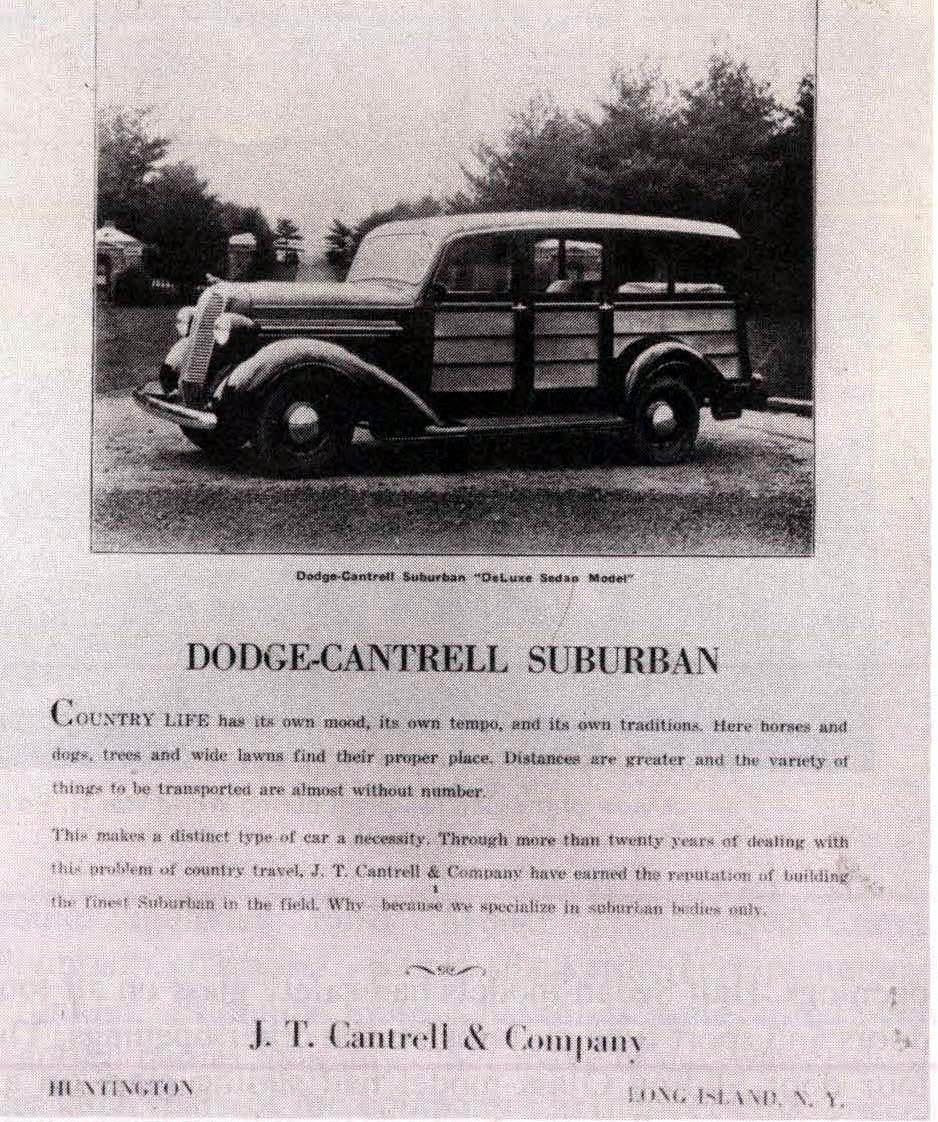
The Cantrell bodies were certainly strong and durable. Ask John Frieman of Islip, N.Y. As a young man in college he drove his Dodge-Cantrell off the Walter Blair Agency showroom floor in 1938. Since then he has driven 113,000 miles through rain, fog, sleet, snow, heat waves, sub-zero weather, floods and hurricanes. He commuted for years to New York City; carried chicken manure from his father's farm, and hauled his 11 hounds to hunt. Replacement of the roof fabric was the extent of his repairs to the body! He still uses the car for around town transportation.
Caption: A Dodge-Cantrell Suburban.
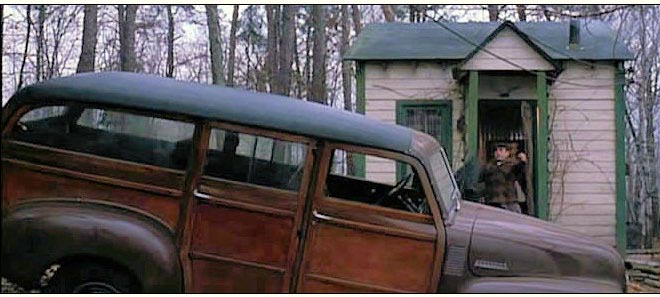
In retrospect, it is remarkable that this small company successfully spanned the era from horse drawn carriages to motorized wagons, and continued specialty building throughout its entire existence. Indeed, the company played a major role in all aspects of wood coachwork. They built the original "depot wagon" of the teens, the "suburban" body of the twenties and thirties, custom made specials, contract work during the war, and finally. during the twilight years of their era, constructed the last of the wooden station wagons as the manufacturers went to all metal bodies.
Caption:A 1948 Chevrolet-Cantrell seen in the movie Hoffa .
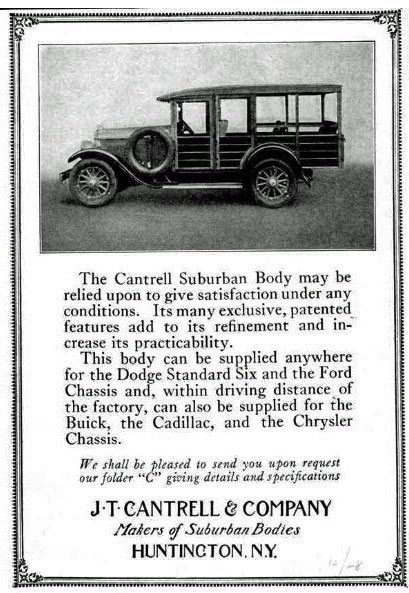
Joseph T. Cantrell now spends his leisure time on his hobbies of sailing and woodworking. I recall an article from a local paper a few years back about Mr. Cantrell building a sailboat with his 11-year-old grandson. He still lives on Dewey Street in Huntington, where he has for the past 50 years, just a mile from the site of the old plant where, many years ago, the depot wagon was born.

Comments
Been there; done that -long since!
http://sbiii.com/chryslr5.html#powerwgn and
http://sbiii.com/longis-3.html#liautomf
Sam, III
__________________________________________
From Howard Kroplick I
Sam, thanks for the links!
When J.T. Canterll first learned the wood working trade he came to work on L.I. by boat from Upstate NY. He sailed and paddled it himself. By 1958 there was not much call for wooden bodies. They experimented with fiberglass van bodies. One of last Cantrell family members was a lawyer. He did most of the office work to close the company and went on to be a lawyer at Chrysler in Detroit.
In the photo of the couple with the model T depot wagon (8th photo down) is Albert Cantrell not Joseph. Compare the features to the photo of the two brothers taken in 1950, Albert is on the right. Same man in both photographs.
Really neat to see the photographs and images Walter McCarthy supplied, thanks!
_____________________________________________________
From Howard Kroplick
Good catch! Thanks.
As stated in the article, Cantrell took over the T.F. Scudder shop on Main Street in Huntington. However, that shop was not located at Green Street. It was east of New York Avenue (Route 110). It was replaced by the Bank of Huntington building, which is now Bank of America. The carriage factory at Green Street was under different ownership.
___________________________________________________________________
From Howard Kroplick
Robert, thanks for the correction.
This is so interesting. In about 1972, I drove to Huntington Harbor to search for what was left of the JT Cantrell company. I met JT’s son, who owned a marine electric company near the waterfront. He was very nice, and explained that his father had dementia and was living in a nearby nursing home. He recommended that I would probably not enjoy meeting him; that he was very ill. We spoke for a while, and before I left, he gave me a souvenir: a copy of the Essex Terraplane woody photo you display here. Thanks for the memories.
Thanks for the informative J.T. Cantrell presentation. As a Huntington resident I’m always glad to see interesting Huntington history, especially when it relates to cars.
Ken
Ed Cantrell seen by the 1940 Chevy woodie was very interested in boats, too. He started a marine electrical shop when the body factory closed. I understand he gave the family archives of J.T.Cantrell Co to the Huntington Historical Society in recent years.
Anyone know which estate gates those are in the first photo? They look so familiar. I have seen some of these cars at shows and the workmanship is awesome. So much more involved than the Ford Woodies. Great article,thanks.
@Stevel- I thought the exact same thing about the gates in the first photo. (The second photo down of the Buick is also in front of the same gates) They do seem familiar, but I’ve been trying to identify them for a couple of days and I’ve been unable to match them so far. Being Cantrell was located in Huntington, I stated looking at the local estates and moved outwards from there. Still searching….
An incredible website resource about Gold Coast estates for yourself, or anyone interested, to check out, is Zach L’s blog; Old Long Island
http://www.oldlongisland.com/
I guess sometimes I’ll overthink things and pass right by the obvious! After scouring various websites trying to match the estate gates behind the cars in the photos, I’ve finally realized the simple answer. While sitting at a traffic light near my house, I glanced over to my left and lo and behold, there were Oheka Castle’s gates. The wrought iron gates are gone and the lights have been changed, but there’s no question they’re the gates from the photo. Makes pefect sense, Oheka is a few minutes distance from the Cantrell shop and what better place to photograph/display your product but the second largest residence in the country.
______________________________________________________
From Howard Kroplick
Greg, good find (see above).
I have a family friend who owns a 1948 J.T. Cantrell Dodge wagon. I’m just trying to do a little bit of research for him. Does anyone know of anyway to find out how many of the 1948 J.T. Cantrell’s were manufactured that year or even how many on that dodge chassis? Or who I would need to seek that kind of information from? Any information would be extremely helpful.